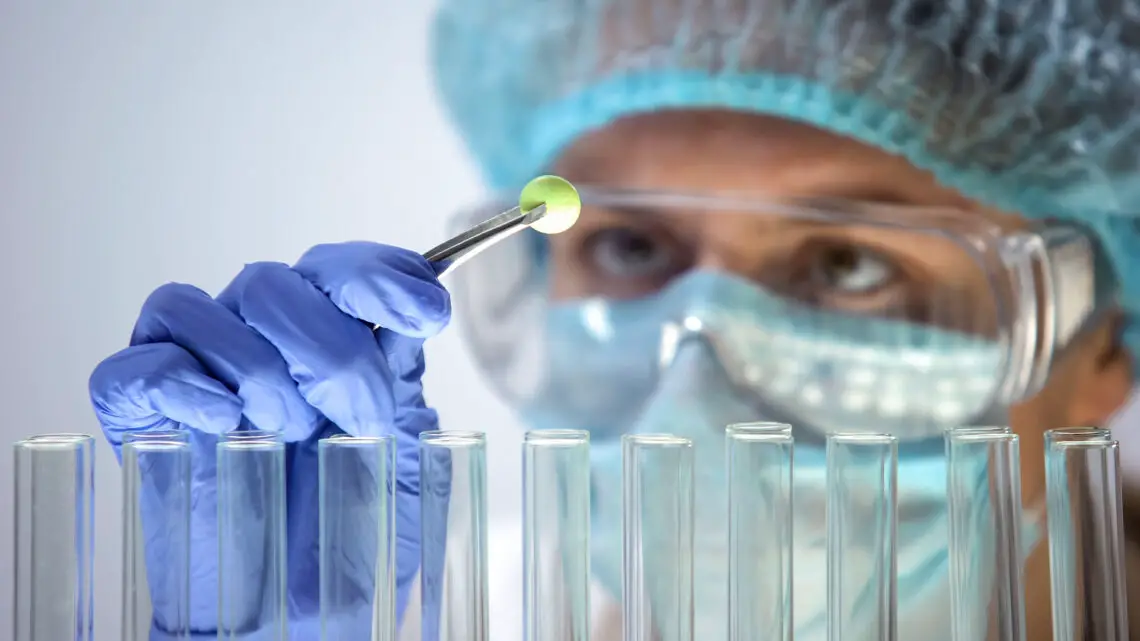The practise of homeopathy has been referred to in the past as both an art and a science. As an art, it’s applied using the creative skill of the prescriber to heal. As a science, it’s applied according to the traditional scientific method, that is, by very careful observation, measurement and experiment, in the form of homeopathic provings. The science of homeopathy is continually being validated by the use of experimental research. Here are some notable extracts recently published in peer-reviewed journals.
Human Research
- Nigwekar AM, et al. Subjective pain relief experienced in Musculoskeletal System (MSS) Disorders by elderly patients on homoeopathic medicines: An observational study. Int J Homoeopathic Sciences. 2021;5(1):155-8. An observational cohort study was done via secondary data analysis of 278 patients visiting a homeopathic hospital for a period of 10 years to observe the subjective relief from homeopathic medicines in musculoskeletal disorders.7.32% of patients reported 25% relief, 35% of patients had 50% relief, 17% of patients were better by 75%, 14% of patients were free of pain and had improved ease in mobility, while 16% of patients reported no relief. Homeopathic medicines like Kali Carb (27.3%), Silicea (21.2%), and Calcarea Flour (13.7%) were the most indicated remedies in the elderly patients with these complaints and centesimal scale (30C – 38% of patients & 200C – 59% of the patients) was the most common potency scale used.
- Kariyil JT. A clinical study on homoeopathic medicines in pain management of haemorrhoids in adult age group. Int J Homoeopathic Sciences. 2021;5(2):71-4. Using purposive sampling, a prospective, observational study was carried out in 30 people with haemorrhoids who were treated by individualised homeopathy. Each case was followed for 6 months and an outcome assessment was done by scores before and after the study. Statistical analysis was done using a t-test where the result was t (29) = 24.80, p< 0.05 which shows there was a significant improvement in pain.
- Singh R, et al. Role of homoeopathic medicines in cases of frozen shoulder. Int J Homoeopathic Sciences. 2021;5(2):166-9. A prospective, observational study was done in the outpatient department of the Dr. Girendra Pal Homoeopathic Hospital in Jaipur. 35 patients suffering from frozen shoulder were enrolled as per inclusion and exclusion criteria and treated with individualised homeopathic medicines along with physiotherapy. Shoulder pain and disability index was used for pre and post treatment assessment. Homeopathic medicines provided significant benefit to patients suffering from frozen shoulder, difference of mean = 1.72857, t (34) = 13.965, P = 0.005. Paired sample t- test result shows, disability improved by homeopathic medicine, difference of mean = 1.73714, t (34) =11.707, P = 0.005.
- Dubey A, et al. Analysis of homoeopathic genus epidemicus for COVID-19 patients in Gujarat: A retrospective cohort study. Int J Homoeopathic Sciences. 2021;5(4),Part D. Authors conducted a retrospective case series study, collecting data from the Parul Sewashram Hospital, Vadodara and 4 constituent homeopathic medical colleges of Parul University in Rajkot, Ahmedabad and Vadodara, on 280 patients with symptoms of or confirmed COVID-19 infection or close contact with confirmed patients, who were treated with individualised homeopathy. They included data through checklist questionnaires on the day of case the analysis and 10-15 days after starting treatment. 268 cases were mild and moderate; 12 were serious. Severe cases were excluded from the analysis, 268 mild and moderate cases were analysed, and clear general clinical images with mental, general and peculiar symptoms were obtained. The most commonly prescribed medications were Bry, Ars, Phos and Gels, while the best responders were Sulph, Puls and Bry. The time to complete recovery after homeopathic treatment was 3 to 14 days, depending on the medication used. The use of 200C potencies was associated with a faster complete recovery rate.
- Nisha CN, et al. Prevalence of covid-19 in patients taking Arsenicum album 30C as a prophylactic: A cross-sectional analytical study. Int J Homoeopathic Sciences. 2022;6(2):5-8. This study was done to compare the prevalence of COVID-19 in patients taking the homeopathic prophylactic remedy Arsenicum album 30C and those not taking any other prophylactic remedy. The correlates of COVID -19 in study participants were assessed and the symptom distribution in COVID-19 positive cases in study and control groups were compared. 341 participants were selected for the study by consecutive sampling. Data collection was done through a pre-tested structured questionnaire. The comparison of prevalence and covariates was done by Chi-square test and analysis of covariates was done by logistic regression. The overall prevalence of COVID-19 among the study subjects was 30.2%. In logistic regression analysis, the adjusted odds ratios with 95% CI was found to be 0.17. After adjusting for all covariates, it is found that in those taking Arsenicum album 30C as a prophylactic there was an 83% less chance of getting COVID-19 infection.
- Niranjan M.: Early diagnosis and treatment outcomes with individualized Homoeopathic medicine: A single blind, simple randomized placebo controlled study. Int J Homoeopathic Sciences. 2022:6(2):70-6. 90 people with rheumatoid arthritis (RA) were randomised to individualised homeopathic treatment with centesimal potencies (Group – I), millesimal potencies (Group – II) or control (Group – III) for 2 years and monitored for response to change in the Disease Activity Scores in 28 joints (DAS28). Chi-square test for comparison of centesimal potency and placebo the chi-square was 32.593 with 1 degree of freedom. The two tailed P value was less than 0.0001. Hence the result was a statistically significant difference (P< 0.4212, Cl=95%) in the treatment of RA. Similarly for the millesimal potency and placebo the chi-square was 41.567 and hence the result was significant. For the centesimal and millesimal potencies the square was 0.647 with two tailed P value of 0.4212 and hence the result was non-significant. What this showed was that centesimal and millesimal potencies were equally effective in the treatment of RA.
In Vitro Research
- de Souza APM, et al. Homeopathy: a possible weapon against multidrug-resistant bacteria to antibiotics. Int J High Dilution Res. 2014;13(47):114-114. This study evaluated the action of the different homeopathic medicines against the growth of the bacteria Staphylococcus aureus and MRSA (methicillin-resistant Staphylococcus aureus) “in vitro”. Doses of 150, 250 and 350 μL of the homeopathic medicines Silicea, Hepar sulf, Belladonna, Arnica montana, Merc solubilis and nosode of Staph aureus, in 6C, 12C, and 30C potencies had been placed in 3mL culture liquid. Added to this blend was 10 μL of a diluted bacterial solution 1/10, and these were incubated at 37°C, and the growth in the tubes was evaluated in spectrophotometric of 600 nm. The results demonstrated that, for the Staph aureus, significant bacterial growth inhibition was observed in about 70 to 90% of the growth “in vitro”, provided by the homeopathic medicines Hepar sulf 30C, Belladonna 6C and 30C, in the Staph aureus nosode 6C and 30C and Silicea 6C, with regard to the control with alcohol 30%. The MRSA presented inhibition from 40% to 20% of the bacteria growth “in vitro” related to the control with alcohol 30%, with the same medicines used before.
- Passeti TA, et al. Action of methicillin on the growth “in vitro”of bacteria Staphyloccocus aureus methicillin-resistance previously homeopathic treatment. Int J High Dilution Res. 2015;14(2):57-8. The Clinical and Laboratory Standards Institute (CLSI 2014) standards were followed according to the determination of the minimum inhibitory concentration (MIC). In 5 mL of cation adjusted Mueller Hinton (CAMH) broth, it was added 420 μl of 30% alcohol or Belladonna and S.aureus nosode in the dilutions 6C, 12C and 30C. Then a 20μl of bacterial suspension of methicillin-resistant Staphylococcus aureus (MRSA) was added to 0.5 McFarland range and diluted to 1/10. The tubes were incubated in an oven at 37⁰C for 3 hours. The plates were previously prepared with 50μl per well of serial dilutions of the antibiotic oxacillin in concentrations of 128 μg/mL to 0.5 μg/mL in CAMH broth. Then it was added 50 μl per well of bacterial cultures. The plate was incubated in an oven at 37⁰C for 24 hours and the bacterial growth measured in a spectrophotometer 600nm. The point of the MIC of oxacillin for S. aureus is 4 μg/mL, according to CLSI 2014 criteria. Authors did not observe the total inhibition of bacterial growth when incubated with the homeopathic medicine and oxacillin. In evaluation of the spectrophotometer culture, they observed significant changes in the growth, compared to the control (30% alcohol). Cultures treated with Belladonna 6C and the antibiotic in the dilution 4 μg/mL showed a decrease of 40% of the growth, while in the 30C the drop was of 75%. Cultures treated with the S.aureus nosode 30C and the antibiotic at 4 μg/mL dilution, showed a decrease of 60% in bacterial growth in vitro. The results suggest that bacterial cultures the S. aureus (MRSA) incubated with the homeopathic medicines would be more susceptible to oxacillin’s antimicrobial action.
Animal Research
- Coelho CdeP, et al. Pilot study: evaluation of homeopathic treatment of Escherichia coli infected swine with identification of virulence factors involved. Int J High Dilution Res. 2014; 13(49):197-206. Escherichia coli (E. coli) was isolated from 4 piglets with diarrhoea, their clinical signs were used to select the adequate homeopathic medicine, China officinalis (China). Newborn piglets were divided in 4 groups (n=11 or 12): control group treated with the routinely used antimicrobial agent (ceftiofur 4 mg 1 ml/piglet for 3 days); one group with homeopathic medicine China 30C; one group treated with a homeopathic nosode prepared from locally isolated E. coli; and one group was treated with association of China and nosode. All isolated samples of E. coli were subjected to polymerase chain reaction (PCR) to identify virulence factors in each group. There was no difference in the number of animals with diarrhoea between groups treated with homeopathic medicine and control; weight gain was greater in groups treated with homeopathic medicine alone and associated with nosode compared to control (p<0.05). Cost of homeopathic treatment was lower compared to ceftiofur.
Plant Research
- Mondal S, et al. Natrum mur 200c promotes seed germination and increases total protein, chlorophyll, rubisco and sugar in early seedlings of cowpea under salt stress. Int J High Dilution Res. 2012;11(40):128-128. The purpose of this study was to determine whether potentised Natrum mur could alleviate salt stress in germinating seeds of cowpea Vigna unguiculata (L) Walp. Water-soaked seeds were kept over moist filter paper in covered petri dishes which were divided into 5 groups: (1) unstressed and untreated control in sterile distilled water, (2) in 100mM sodium chloride solution, (3) seeds pre-treated with Natrum mur 200C and then kept in sterile distilled water, (4) seeds pre-treated with Natrum mur 200C and then transferred to 100mM NaCl solution and (5) seeds pre-treated with 90% ethanol. Both Natrum mur 200C and its diluent medium (90% ethanol) were diluted with distilled water 1:100 before use for treatment. Natrum mur 200C increased the rate of seed germination, seed water content and growth of seedlings. The drug also enhanced chlorophyll, soluble and insoluble sugar, rubisco and total protein content as compared to the untreated salt stressed group. Treatment with Natrum mur 200C increased salt tolerance in the seedlings as compared to the untreated salt stressed group. All the data were analysed by ANOVA and the significance level was not less than 1%.






